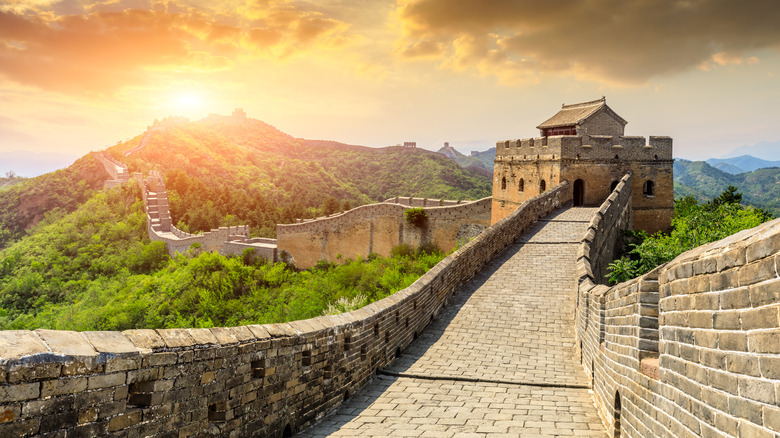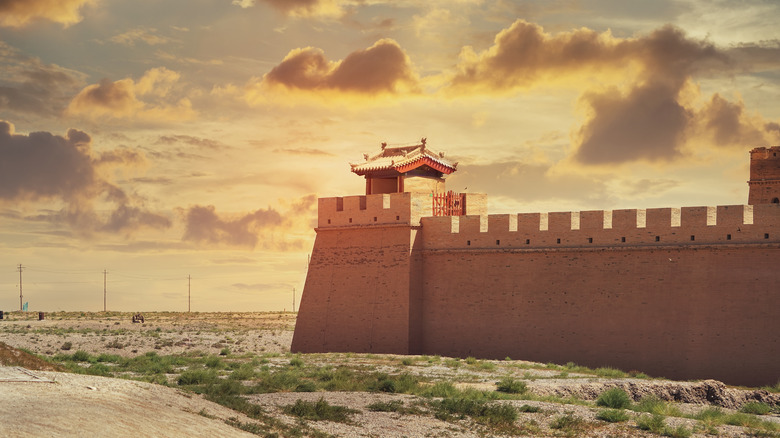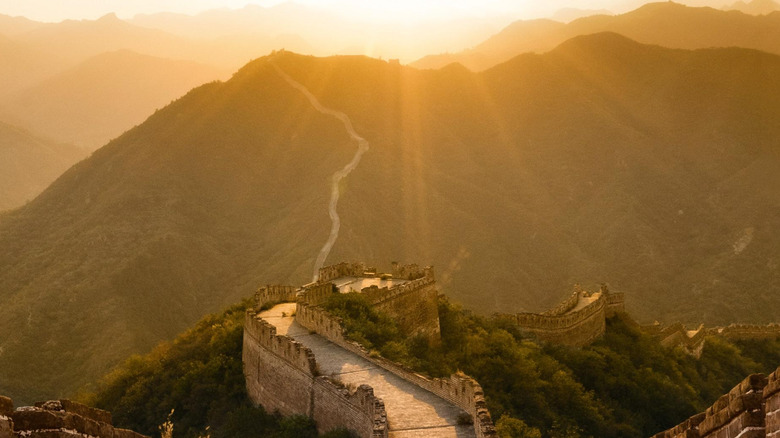The Mortar In The Great Wall Of China Had An Unusual Ingredient
The Great Wall of China is among the most remarkable and gargantuan building feats in human history. Britannica points out that it is not in fact one wall, but multiple, built over the course of around 2,000 years and spanning an incredible 13,171 miles in total.
As History reports, the story of the Great Wall seems to date back to 220 B.C. Around this time, Qin Shi Huang of the Qin Dynasty envisioned a robust and sizable system of defenses for the newly-united nation. He set about consolidating and combining numerous walls into a great system of them, and over the centuries, it became great indeed.
With the age of the wall in mind, it was inevitable that some would not have survived to the present day. According to Britannica, a 5,499-mile section that was built in the Ming Dynasty can be seen today, very well-preserved and maintained for its age. Perhaps the survival of the wall can be partially attributed to a very unusual component that was used in the mortar during construction.
A tough and tasty ingredient
Needless to say, when it comes to the construction of a wall, bricks and mortar are both crucial components. Without the former, you'd just have a soggy mess that wouldn't really deter anybody (unless they happened to get stuck in it and allow it to dry around them), and without the latter, you'd just have a rather formidable pile of bricks that the Big Bad Wolf probably could have blown down.
These concerns would not have been lost on the master engineers of China. Works of the Ming Dynasty (1368-1644), per Britannica, are known for their fine attention to detail, with delicate porcelain, pottery, and other similar pieces. Ming artists and workers were known to show deference to existing styles, while adding further refinements of their own.
This is particularly evident in the Ming portion of the Great Wall. In the mortar of the wall, it seems that they added a very special ingredient that contributed to the structure's longevity: rice.
When they say sticky rice, they mean sticky rice
In the paper "Study of Sticky Rice-Lime Mortar Technology for the Restoration of Historical Masonry Construction" (via the American Chemical Society), Bingjian Zhang et al wrote that Chinese builders created a very special mortar around a century and a half ago.
Slaked lime was the main ingredient. Other ancient civilizations such as the Romans also reportedly used lime mortar, and Zhang et al. state that "in the Roman era, ground volcanic ash, brick powder, and ceramic chip were added to lime mortar, greatly improving performance," via Accounts Of Chemical Research. The study suggests that the Chinese would not have had access to such ash, so they developed their own way of augmenting their mortar.
The paper's abstract reports that ancient architecture was extensively studied using methods such as scanning electron microscopy. The conclusion was that "the inorganic component is calcium carbonate, and the organic component is amylopectin, which is presumably derived from the sticky rice soup added to the mortar."
Per Smithsonian Magazine, the research determined that it was this creative mixture that helped architecture from the Ming dynasty (and surely earlier) endure natural disasters and survive for so long. The study suggests, per Accounts of Chemical Research, that the amylopectin kept the development of calcium carbonate in check, thereby reducing the effects of wear and tear on buildings. Sticky rice mortar, the researchers concluded, is an excellent material with which to restore such buildings.


